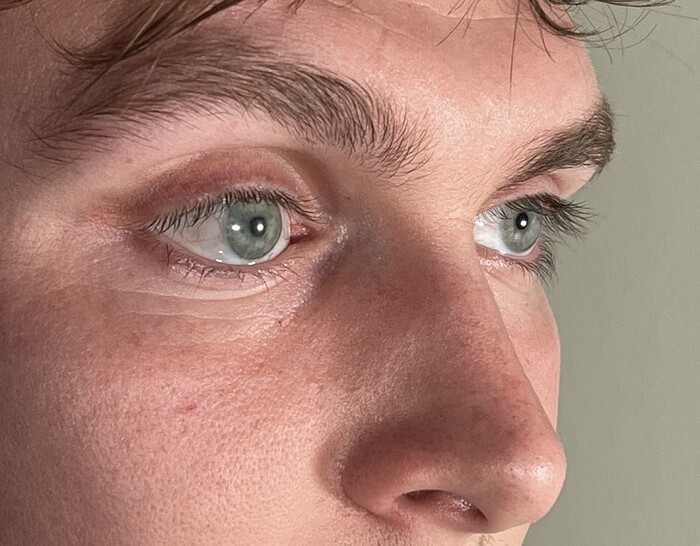Xavier Martínez Faneca, CEO of BCN3DFLAMINIA PELAZZI
Before the pandemic, 3D printing - the creation of three-dimensional objects by overlaying layers of material - was for many a matter of science fiction.
However, the health crisis showed that this technology can be a tangible solution to manufacture, for example, in full emergency, the personal protective equipment (PPE) required by health workers.
This was done by the company BCN3D, a manufacturer of 3D desktop printers based in Castelldefels (Barcelona).
"In an involuntary and unfortunate way, people now understand that in a situation of high demand and the impossibility of producing massively quickly, there is 3D printing", confirms its CEO, Xavier Martínez Faneca.
In the spring of 2020, during the worst moments of the health crisis, and in the absence of protective material for toilets, BCN3D designed, prototyped and produced pieces such as reusable face shields to contribute to their safety.
According to the company's blog, these products reached more than 50 hospitals.
In May, BCN3D the company promoted the European CAR3D innovation project for rapid response against covid-19 together with the European Institute of Innovation and Technology (EIT Health), the Sant Joan de Déu Hospital, the University of Barcelona and the CIM Foundation UPC, with whom it works to design masks that meet EU quality standards in areas such as ergonomics, breathability and skin contact, and that include 3D printing.
"We are improving the development of printable PPE so that, when necessary, it takes us even less than in March to produce them," explains Martínez Faneca.
A little over a year ago, just a few days before the confinement by covid-19, the CEO of BCN3D told, in a report for this newspaper, how he had closed 2019 still in losses, with a turnover of 4.1 million euros and how the workforce had doubled in six months, from 50 to 100 workers.
Since then the world has changed, but the enormous economic slowdown has not paralyzed a sector that has shown its enormous potential.
Proof of this is that the company managed to raise 2.8 million euros last summer in its second round of financing.
The Mondragón Corporation fund, the Danobatgroup specialized group in machine tools and the Center for Industrial Technological Development (CDTI) of the Ministry of Science and Innovation were the main investors.
Video |
3D printing: a passion or a way to change the world
Thanks to these investments, this emerging company founded in 2019 from the Polytechnic University of Catalonia (UPC) has continued to grow.
It currently employs 120 professionals, and has just renewed its portfolio with the launch of three products that "cover the entire spectrum of professional printers with affordable prices", highlights Martínez Faneca.
BCN3D activity has not stopped like this, neither during the confinement nor in the following months.
"The 3D printing sector is not so affected by the economic crisis," he celebrates.
Even at NASA
Martínez Faneca, 35, studied Industrial Engineering at the UPC and began as a fellow at the CIM Foundation of the UPC, the germ of the current BCN3D.
His initial dream was to be a pilot.
“When I saw clearly that it was not going to be, I wanted to build them.
Working for the automotive industry, I discovered 3D printing, a very interesting tool from an engineering point of view, and also as a business ”, he recalls.
Now he has a clear objective for BCN3D: "To help many types of industry to design and manufacture their products with 3D printing in a more efficient and more sustainable way".
Its clients include the Sant Joan de Déu Hospital and companies such as Seat, BMW or Camper.
He is even aware that his 3D printers are being used at NASA, although he cannot give details of what for.
"We collect data on the use of our printers, but we do not see the piece itself, much less understand what is the use that is given," he reveals.
“The challenge for 3D printing is to go from being a prototype technology to a final part technology.
Neither time nor money is it economical yet, although it is already useful for small series, as is the case with the tendency to adaptation where there are no uniform runs, but the product is customized ”, says the engineer.
In the field of combating the climate emergency, the challenge of this technology is the use of recycled materials.
"If plastic were only used in 3D printing, it would not be worrying, but we are working hard on projects to take the step, although complicated because it is not the same to work with a pure and homogeneous material than with a recycled one", acknowledges Martínez Faneca.
How far will 3D printing go?
Will we see something akin to
Westwold's
dystopia
,
where it combines with artificial intelligence to recreate the world, including the fabrication of humanoids that are impossible to distinguish from flesh and blood people?
"When I started, I thought it was impossible to print a flexible part, but I was wrong ... 3D printing is based on adding any material and this concept is very powerful, because if you are able to do it at the end you can add anything.
I do not know if we will get to
Westworld,
but it will be much more common than now that many things in our environment are printed in 3D, "he says.
You can follow EL PAÍS TECNOLOGÍA on
and
.







